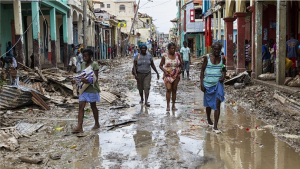How Do Caribbean States Plan for Adaptation to the Impacts of Hurricanes, Sea Level Rise and other Climate Risks? – A Reality Check for the Expectations Towards the ‘Adaptation Rationale’
What role do the findings of climate impact and vulnerability assessments play in decision-making processes for climate change adaptation? What scientific tools and techniques are used to support it? What criteria are used to support these decisions – only costs and benefits or also other considerations? How are future climate risks and related uncertainty, avoided losses or limits of adaptation being considered in these decisions?
These and other questions have inspired a systematic assessment of the planning processes of adaptation interventions in the Caribbean States during the last ten years, conducted by PlanAdapt and Climate Analytics. Eighty-nine adaptation planning documents of adaptation and climate risk-related policies, strategies, programs, and projects were assessed, covering a funding volume fo more than 900 million USD.
It was found that the so-called climate or adaptation rationale as required by bi- and mulitlateral adaptation donors (i.e. distinguishing climate risk-related programming and programming pursuing underlying economic, enviromental and social policy objectives) demonstrates a considerable challenge to both parties, the applying states and the approving donor or financier. The applicants for adaptation funds are required to demonstrate that the proposed activities are (a) formulated on the base of a rigorous assessment of cimate impacts and vulnerabilities and (b) appraised in view of their likely performance to cope with the projected future climate risks.
The findings of the study show that in many cases the demonstrated linkages between identification of adaptation options and assessments of climate hazards, impacts, vulnerability, and risk are weak and not well understood. In addition, interventions have been selected without a rigorous appraisal processs in the majority of all planning processes. Existing process guidance (e.g. adaptation planning guidelines by CCCCC) has only been followed in less than 50% of all cases. That means that more than 400 million USD have been approved on a fairly light-touch and somehow insufficient evidence base. Beyond these results, it may be worthwhile to reconsider the expectations put forward by adaptation fund(er)s to justify the ‘climate relevance’, particularly as long as the guidance for applicants is limited or poor.
Please find the full paper here and a presentation of additional findings at the Adaptation Futures Conference 2018 in Cape Town.

